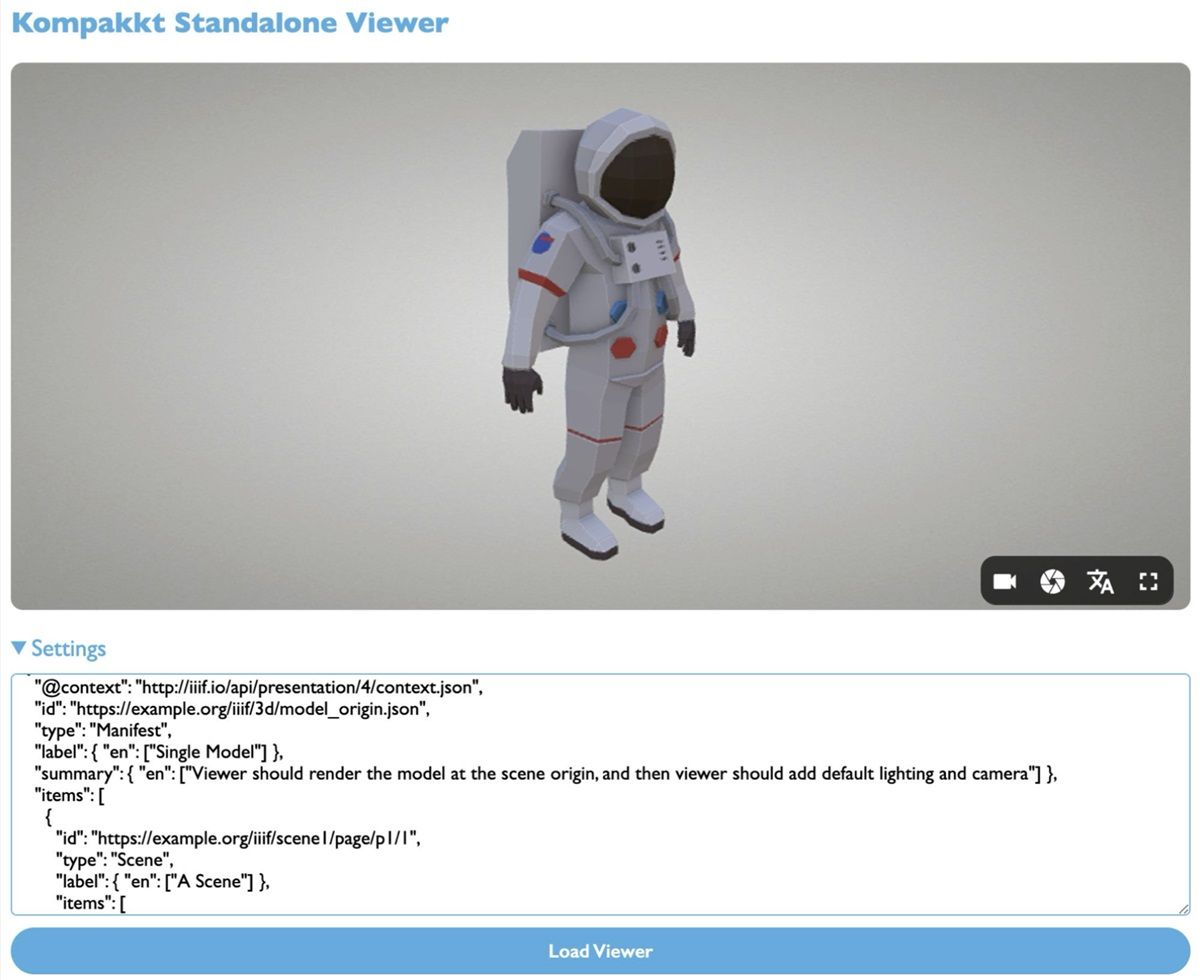Introduction of IIIF manifests for 3D
The development and recent release of the first draft IIIF Presentation API manifests encoding 3D content mark a critical milestone to complement and extend existing IIIF specifications. These manifests and the corresponding specifications have been developed by the 3D Technical Specification Group (TSG) to consider the complexity of 3D objects, addressing issues such as spatial orientation, lighting and camera settings. This is crucial for the digital preservation and presentation of cultural heritage.
The goal of the manifests is to create a standard for seamless integration and interaction with 3D content across different platforms and institutions. The available manifests are being constantly expanded and currently include ways to:
place a basic model in a scene
include and exclude model features such as specific lighting or camera settings
add two canvases in a scene
place several objects in a scene
Implementation and examples from (Semantic) Kompakkt
Now that the drafts are available, the practical implementations can be realised. Several viewers (i.e. software tools for viewing 3D media) have piloted the implementation of the API and can process the manifests.
One of those viewers is Kompakkt, which an interdisciplinary team at several German universities, research institutions and libraries has been developing since 2017. It is a free online repository and (3D) viewer for multi-modal 3D annotations, specifically designed for collaborative work and storytelling. Kompakkt is fully open source and optimised to provide public access to cultural heritage objects, archival material or similar. It enables users to share, explore, and collaboratively annotate objects in standard modern web browsers. It is based on Babylon.js, Angular and MongoDB.
In addition, a semantic extension, Semantic Kompakkt, was developed at Open Science Lab, TIB Hannover, as part of the project NFDI4Culture. It utilises a database connection to Wikibase, the open source, linked open data environment released by Wikimedia Germany to allow users to add semantic data and annotations to multimedia content. (Semantic) Kompakkt is now able to interpret the IIIF draft manifests and load 3D objects accordingly (see the code and work-in-progress deployment). While the basic functionalities offered by the manifests are covered by (Semantic) Kompakkt, additional features can be explored. The development will consider the needs of its users including, for example, the placement of several individual 3D objects in a scene or the combination of different media content such as images and 3D models.



